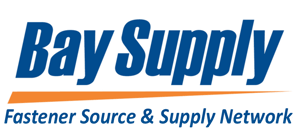
When choosing a fastener supplier, what is your primary criterion? Many buyers look for the best price and the fastest availability of parts. Selecting a vendor based on price and available inventory may get you out of a temporary jam if you need fasteners in a hurry to maintain production. Still, you need to consider other criteria when choosing a fastener supplier that can help you build your business.
Choosing the cheapest supplier could lead to other issues that cost you more in the long run. Inferior fastener quality can lead to faulty products or a need to retool to meet production goals. Less reliable vendors may ship the wrong part, resulting in unnecessary expenses and delays. Choosing the least expensive option could leave you scrambling for fastener inventory.
Grand View Research estimates the global industrial fastener market will reach approximately $131 billion by 2030, with a compound annual growth rate of 4.8 percent. The U.S. remains one of the largest markets for fastener imports, and demand is increasing across automation, aerospace, and the manufacture of lightweight vehicles and aircraft. With tariffs and disruptions in materials supply, it’s more difficult than ever to find a supplier that can deliver fasteners at an affordable price.
To help you choose the best fastener supplier for your needs, consider the following:
Reputation and Quality
It pays to do business with a fastener provider that has a strong reputation. You should choose a stable supplier with a proven track record of satisfied customers. Ask your colleagues for suggestions and consult industry experts, such as the National Fastener Distributors Association. A list of referrals and customer testimonials can help you narrow your search.
A fastener supplier’s quality control is also an essential indicator of a company’s reputation. Evaluating product quality extends beyond meeting industry standards. Also consider whether the products are well-packed and correctly labeled. Does the product live up to the promise made in the marketing materials? Check customer referrals and reviews to see if the vendor has a reputation for prioritizing quality.
Variety and Reliability
A quality fastener supplier should also offer a variety of products. Fasteners come in a wide range of sizes, configurations, and materials. In addition to the latest and most popular fasteners, a reliable supplier should offer a wide variety to choose from. You want to establish relationships with suppliers that can grow as your business needs change.
The supplier or vendor also needs to have the expertise and reliability to stand behind its products. Any supplier should have knowledgeable personnel who can help you with your order. Staff should be friendly and enthusiastic, able to troubleshoot any problems, and stand behind fastener orders.
Experience and Expertise
When working with any supplier, you want to feel as though you are more than just another fastener order. Larger suppliers and vendors can meet your product needs, but smaller suppliers may offer more personalized service. Choosing a fastener supplier or distributor that’s factory-authorized improves your chances of timely parts availability.
Any strategic supplier should understand the needs of your business, what’s important to you, and what’s important to your customers. A vendor should listen to your needs and provide guidance on fastener applications, options, and performance. When vetting fastener partners, you should feel confident in their expertise and their commitment to helping you succeed.
Competitive Pricing
Too often, buyers use price as their primary criterion for decision-making. The adage “You get what you pay for” is true. The lowest-priced fastener may be of inferior quality or lack availability, which can ultimately cost you more.
If you find a deal on fasteners, ask yourself why that supplier can sell at a lower price. Is it because it uses inferior materials? Does it reduce shipping costs, which could affect delivery time? Know what you’re getting before you place the order. If the price seems too low, there’s probably a reason you aren’t seeing.
Shipping and Availability
Even if you find a great deal on fasteners, prompt delivery of the correct number of units may be more critical. Any savings you gain from the reduced cost of fasteners can be quickly lost to production downtime waiting for a shipment. If your supplier has good customer service, it should be able to guarantee delivery and track goods in transit.
When choosing a fastener supplier, consider geographic location. Long-distance shipping can increase freight charges and lead to delays. Using regional suppliers can help you reduce your carbon footprint.
Multiple Suppliers
It pays to identify various sources for critical parts. You may negotiate a deal with a primary source of parts and fasteners, but you never know when an inventory shortfall or delay in parts availability may occur. If you have multiple sources for the same fasteners, you can spread your risk and ensure fastener availability.
The Bay Supply Marketplace is an ideal resource for sourcing parts from multiple vendors. You can issue a request for quotes for any fastener parts or tools and receive quotes from various sources, allowing you to choose the best supplier and discover other vendors that may have the parts you need.
Choosing the best fastener supplier partner is about more than just price. Your fastener inventory keeps your business running, and you want to work with vendors that have a strong reputation for high-quality products, guaranteed delivery, and excellent customer service.
Seeking the ideal fastener for your upcoming project? Bay Supply can help. Request a quote.

Comments